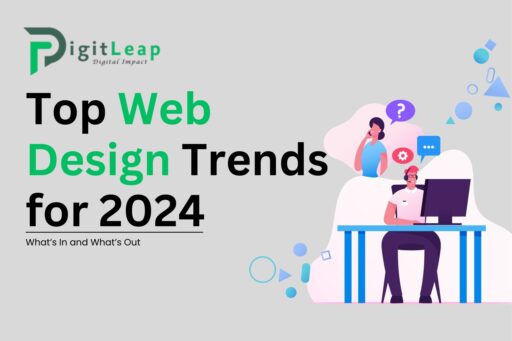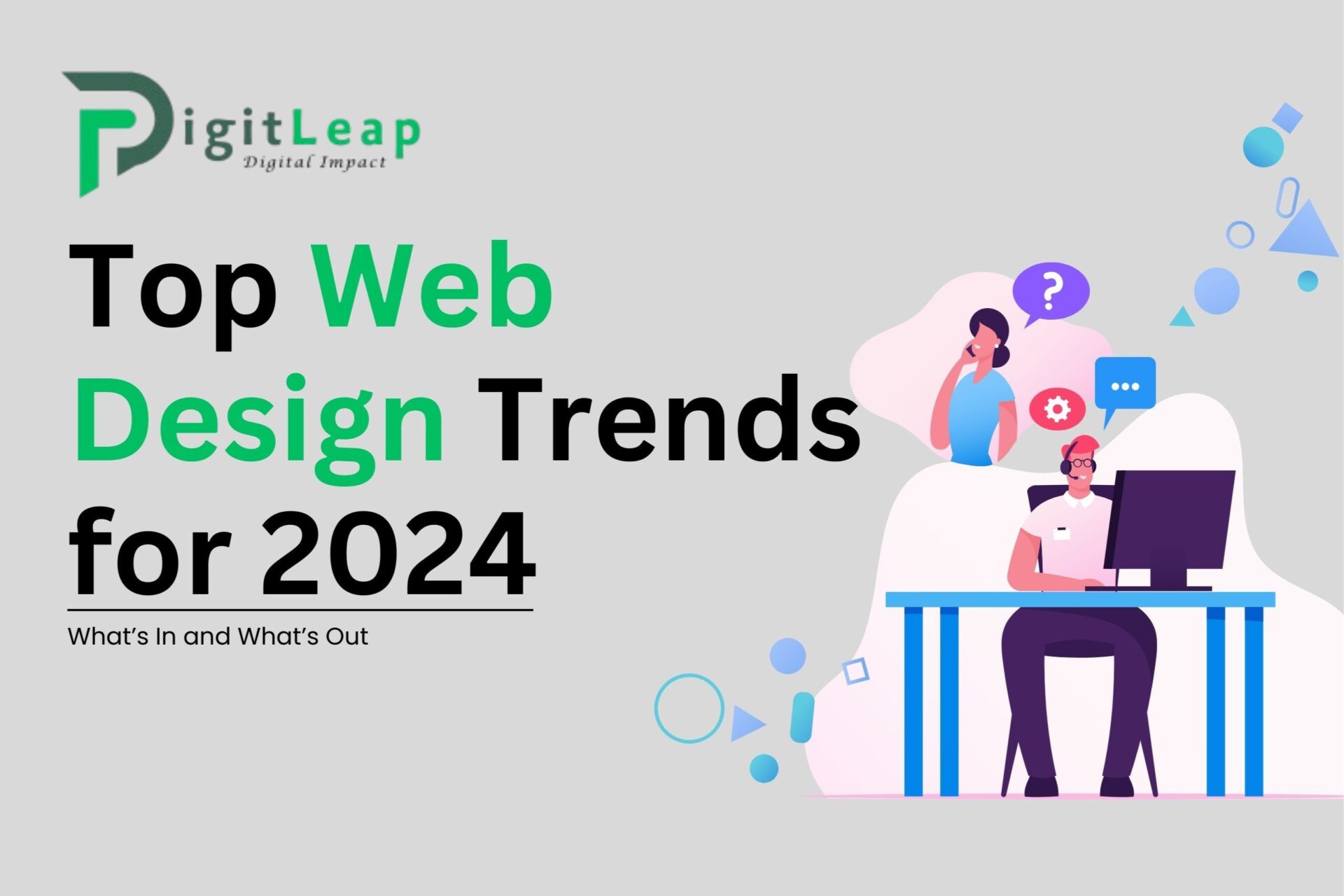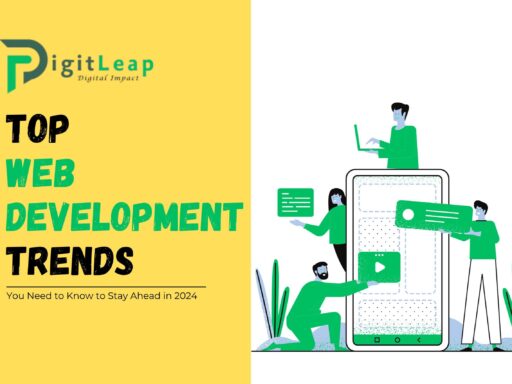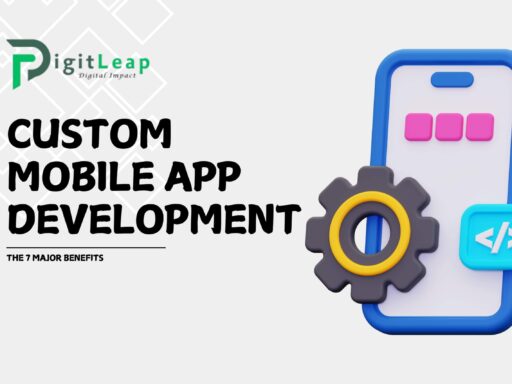Top Web Design Trends for 2024: What’s In and What’s Out
Staying updated with web design trends is crucial if you want your website to look modern, engage users, and perform well. In 2024, web design is evolving faster than ever, with new technologies, styles, and user expectations shaping the landscape. In this guide, we’ll explore the top web design trends of 2024, highlighting what’s in, what’s out, and how you can adapt your site to stay ahead of the curve.
1. Trend In: Dark Mode and Light Mode Toggle
Why It’s In:
Dark mode became popular for reducing eye strain and saving battery life on devices. The trend continues in 2024, but with a twist: websites now offer users the ability to toggle between dark and light modes.
How to Implement:
- Toggle Button: Add a simple switch or button that allows users to change between modes.
- Automatic Setting: Enable your site to detect the user’s device settings and adjust automatically.
Benefits:
- Enhances user experience by providing a personalized browsing option.
- Dark mode can improve readability in low-light environments.
Example:
Websites like Twitter and YouTube offer dark mode toggles, allowing users to switch between modes effortlessly.
2. Trend Out: Excessive Animations
Why It’s Out:
Excessive animations and flashy effects can slow down your website and frustrate users. In 2024, simplicity and speed take precedence over complex animations that distract rather than enhance.
What to Do Instead:
- Micro-Interactions: Use subtle animations for elements like buttons or hover effects to create a more engaging user experience.
- Purpose-Driven Animations: Focus on animations that guide the user, such as highlighting a call-to-action or providing feedback when a form is submitted.
Downside of Overdoing It:
- Slows down page loading times, negatively impacting SEO and user retention.
- Can overwhelm and distract users, leading to a poor experience.
3. Trend In: Minimalism with a Pop of Color
Why It’s In:
Minimalism is still strong in 2024, but with a fresh twist—pops of vibrant colors. Designers are embracing clean layouts paired with bold, contrasting colors to draw attention without overwhelming the user.
How to Use This Trend:
- Whitespace: Maintain plenty of whitespace to keep your design clean and uncluttered.
- Accent Colors: Use bright colors sparingly for buttons, links, or key sections to add interest.
- Color Psychology: Choose colors that resonate with your brand and evoke the desired emotional response from users.
Benefits:
- Creates a visually appealing and easy-to-navigate site.
- Enhances readability and makes key elements stand out.
Example:
Brands like Apple and Google use minimalist designs with vibrant accent colors to highlight important features.
4. Trend Out: Overcomplicated Navigation
Why It’s Out:
Users want to find information quickly. Overcomplicated navigation with too many menu options or hidden sub-menus is a big turn-off.
What to Do Instead:
- Simple Menus: Stick to the essentials in your main navigation. Use clear, concise labels.
- Sticky Navigation: Keep your main menu visible as users scroll down the page for easy access.
- Mega Menus: For content-heavy sites, use mega menus that display all options in a well-organized format.
Problem with Complex Navigation:
- Confuses users, leading to higher bounce rates.
- Makes it difficult for search engines to crawl and index your content properly.
5. Trend In: AI-Powered Personalization
Why It’s In:
Artificial Intelligence (AI) is making websites smarter by offering personalized content and recommendations based on user behavior. This trend is all about creating unique, customized experiences for every visitor.
How to Implement:
- Content Recommendations: Use AI to suggest articles, products, or services based on what users have viewed.
- Chatbots: Deploy AI-powered chatbots to provide real-time assistance and answer common questions.
- Dynamic Content: Change website content dynamically based on the user’s location, preferences, or past interactions.
Benefits:
- Increases engagement by showing users what they’re interested in.
- Improves conversion rates by tailoring the experience to individual needs.
Example:
E-commerce sites like Amazon use AI to recommend products based on your browsing history.
6. Trend Out: Stock Photos Overload
Why It’s Out:
While stock photos are convenient, overusing them can make your site feel generic and disconnected. In 2024, authentic imagery is key to building trust and connection with your audience.
Alternatives to Stock Photos:
- Custom Graphics: Invest in custom illustrations or graphics that reflect your brand’s personality.
- Original Photography: Use real photos of your team, products, or workspace to build authenticity.
- User-Generated Content: Incorporate photos and testimonials from real customers to add credibility.
Drawbacks of Stock Photos:
- Often look staged and don’t resonate with your audience.
- Reduce the uniqueness of your website.
7. Trend In: Accessibility and Inclusive Design
Why It’s In:
Accessibility is no longer optional. In 2024, designers are focusing on creating websites that everyone can use, including people with disabilities. This trend emphasizes inclusivity and compliance with standards like the Web Content Accessibility Guidelines (WCAG).
Key Accessibility Features:
- Alt Text: Add descriptive text for all images to assist visually impaired users.
- Keyboard Navigation: Ensure all interactive elements are accessible via keyboard for users who can’t use a mouse.
- Readable Fonts: Use clear, legible fonts with adequate contrast between text and background.
Benefits:
- Expands your audience by making your site usable for everyone.
- Improves SEO as search engines prioritize accessible websites.
Example:
Government websites and major brands like Microsoft have been leading the way in accessible web design.
8. Trend Out: Full-Page Pop-Ups
Why It’s Out:
Full-page pop-ups can be intrusive, especially when they block content as soon as a user arrives. In 2024, the focus shifts to less disruptive ways of capturing user attention.
Better Alternatives:
- Slide-In Boxes: Use slide-in boxes that appear from the side without blocking content.
- Inline Forms: Place opt-in forms within the content, making them feel like a natural part of the user experience.
- Exit-Intent Pop-Ups: Trigger pop-ups only when users are about to leave, giving you one last chance to capture their attention without interrupting their journey.
Why Full-Page Pop-Ups Are Fading:
- Annoy users and lead to high bounce rates.
- Can negatively impact mobile usability and SEO.
9. Trend In: 3D Elements and Immersive Experiences
Why It’s In:
3D elements and interactive experiences are becoming more popular as technology advances. These elements can make your website more engaging and memorable.
How to Use 3D Elements:
- Interactive Models: Use 3D models that users can rotate and explore, ideal for product showcases.
- Scrolling Effects: Add depth to your design with parallax scrolling and interactive animations that respond to user actions.
- Augmented Reality (AR): Incorporate AR to let users try products virtually, like seeing how furniture fits in their room.
Benefits:
- Increases user engagement by offering a unique, interactive experience.
- Helps products and content stand out visually.
Example:
E-commerce sites like IKEA use AR to let customers visualize how products will look in their space.
10. Trend Out: Generic Fonts and Typography
Why It’s Out:
Typography is a powerful tool in web design, and using basic, unoriginal fonts can make your website look outdated. In 2024, unique typography is used to create distinct brand identities.
What to Do Instead:
- Custom Fonts: Invest in custom fonts that reflect your brand’s personality.
- Variable Fonts: Use variable fonts that adjust seamlessly between weights and styles, enhancing both design flexibility and loading speed.
- Bold Statements: Incorporate bold, eye-catching headlines to draw users into your content.
Drawbacks of Generic Fonts:
- Lack of character and visual impact.
- Makes your site look similar to countless others.
Conclusion
The web design trends of 2024 emphasize user experience, personalization, and creativity. By embracing trends like AI-powered personalization, minimalist design with vibrant accents, and accessible features, you can create a site that stands out and performs well. Conversely, avoiding outdated practices like excessive animations and generic fonts will keep your website fresh and engaging. Adapt these trends to your brand, and you’ll be on the path to web design success in 2024!





